How will COVID-19 shape used-car markets – November 2020 update
16 November 2020

The November update of Autovista Group’s whitepaper: How will COVID-19 shape used-car markets? considers the ongoing impact of COVID-19 across Europe.
Three-speed RVs: Europe’s used-car prices recover to pre-crisis levels
Following the emergence of Europe’s automotive sector from coronavirus (Covid-19) lockdowns, a ‘three-speed’ development of residual values (RVs) has prevailed across the region. Senior data journalist Neil King explores the latest developments.
Autovista Group’s Covid-19 tracker, which tracks 12 European markets, shows that the index of RVs, compared to early February, is back above pre-crisis levels in all countries except Portugal and Finland. The measurements began in February, with an index value of 100.
The UK has enjoyed the strongest rally in used-car prices, driven by the release of pent-up demand, both from the lockdown and the uncertainty running up to the country’s departure from the European Union on 31 January. The UK also faced a starker vehicle-supply challenge than any other market, which translated into higher RVs as used-car demand outstripped supply. Values rose from mid-May and peaked at 106.0 (a 6.0% rise) in the week to 11 October.
However, RVs have since fallen from this great height as pent-up demand is increasingly satisfied and supply improves. In the latest week for which data are available, to 8 November, the index has receded to 105.0 (a 5.0% rise) and a further downturn is expected as the year-end approaches, which also marks the end of the Brexit transition period. ‘With the new lockdown, it is likely that RVs will continue to fall from their high 2020 position back to where we forecast,’ added Anthony Machin, head of content and product at Glass’s.
French resistance
France benefitted from pent-up demand and a new incentive scheme that came into effect on 1 June. The €8 billion package includes a €7,000 grant for private buyers of new battery-electric vehicles (BEVs) costing less than €45,000 (€5,000 for fleet buyers), while buyers of new plug-in hybrids (PHEVs) can claim a €2,000 subsidy.
Additionally, France doubled its premiums for those looking to trade in older vehicles for a cleaner model, with a €3,000 grant for vehicles with internal combustion engines (ICE) and €5,000 for BEVs and PHEVs. Crucially, the enhanced trade-in bonus also applied to used cars and hence the notable rise in RVs. However, the scheme reached its 200,000-vehicle cap before the end of July and the Ministry of Ecological Transition announced the replacement of the recovery scheme with a conversion bonus, applicable from 3 August. This has translated into stagnation in the development of RVs in France since the end of August, with the index barely rising from 102 to 102.8 in the week to 8 November, falling to third place behind Poland in the process.
Autovista Group anticipates a slowdown in the RV development in France and our latest RV outlook expects prices of used cars to be 0.3% lower in France at the end of 2020 than when the Covid-19 crisis erupted in Europe, in March. ‘A lack of supply has created the RV jump, but OEM plants are now working at, or close to, 100% capacity in France. So, this should no longer be the case and hence this circumstantial jump should decrease by the end of the year. Considering the 2021 malus [tax penalty], people could advance purchases, but we have not changed the outlook right now,’ commented Yoann Taitz, Autovista Group’s head of valuations and insights for France and Benelux.
Figure 1: Three-speed RV graph – indexed price development across Europe

Source: Autovista Group, Residual Value Intelligence, Covid-19 tracker
Rapid-reaction markets
Sweden, Finland and Portugal all had rapid negative reactions to Covid-19. Dramatic lockdown measures were not introduced in Sweden and Finland, but RVs fell from early February to mid-May in both markets.
RVs have climbed in Sweden since mid-May and recorded 102.3 on the index in the week to 8 November, i.e. 2.3% higher than in early February. In Finland, the index of RVs fell from early February to only 97 in mid-June but has recovered slowly and remains at the lowest level in Europe, registering 99.2 on the index in the week to 8 November (0.8% lower than in early February). ‘Finland is still running on low numbers, and we don’t see the same quick recovery as in Sweden. The import of young used Swedish cars has picked up again, in combination with lower used-car values than normal, already a factor before the crisis started,’ explained Johan Trus, Autovista Group’s head of data and valuations, Nordics.
Portugal also endured falling RVs since the tracker index started in February, but a more pronounced downturn commenced at the end of March. As in Finland, the price index has only increased modestly since, to 99.3 in the week to 8 November (0.7% lower than in early February). Portugal and Finland are the only European markets where RVs have not recovered to pre-coronavirus levels.
‘Used-car values have been increasing since the end of May 2020 and almost reached pre-pandemic values at the end of October. There has been similar behaviour across all ages, with the exception of vehicles up to six months old, which reached and exceeded pre-pandemic values as early as June. Used-car transactions have decreased less than new-car registrations during 2020, but there are no new incentive schemes because of the pandemic and also no new incentives from the government for 2021,’ commented Joao Areal, editorial manager of Autovista Group in Portugal.
Late starters
The rest of Europe’s tracked markets remain ‘late starters’ with broad stability in values as several effects are balancing each other out.
On the downside, most European markets essentially remain ‘on hold’ as consumers wait for a better understanding of the full impact of the Covid-19 crisis, especially with a second wave of cases and new lockdowns across the region. In Italy, for example, RVs recovered from late July to mid-October, partly because of the incentives to support the country’s automotive industry, which came into effect on 1 August. However, values have stabilised since.
Conversely, the disruption to new-car supply and demand continues to positively impact RVs. In Germany, for example, used-car transactions were just 3.5% lower in the first 10 months of the year than in the same period in 2019, according to the KBA. They have even performed better than last year, for five consecutive months. New-car registrations have been far more affected, however, and are still 23.4% lower in the year-to-date than in 2019.
Switzerland has also seen large declines in new-car sales volumes; ‘so nearly-new cars aged zero to six months, and used cars in general, still seem to serve as a gap-filler or alternative for new cars and therefore show improved RVs,’ explained Robert Madas, Autovista Group’s valuations and insights manager for Austria and Switzerland.
Meanwhile, the strongest development of RVs in recent weeks has been in Poland, where the index has overtaken France. ‘We can still observe huge demand for used vehicles, especially the youngest, as demand for new vehicles is limited due to fast-growing list prices and lack of availability,’ commented Marcin Kardas, head of the Autovista Group editorial team in Poland.
Year-end negativity
Despite the broad stability in the development of RVs, a mixed picture of used-car demand is emerging, Moreover, as Europe battles a second wave of Covid-19, new lockdowns, growing stock volumes, incentives for new cars, and rising unemployment, Autovista Group expects a slightly negative trend for the end of the year, especially for younger cars.
‘The stable or slightly rising price levels in Germany are, from my perspective, a result of new entrants selling relatively quickly, whereas models that are not moving on remain at badly-managed, comparably high prices. Just to clarify, there is no dealership that is raising prices, but they are listing new arrivals at relatively high prices and are ‘forgetting’ about the older vehicles,’ commented Andreas Geilenbrügge, head of valuations and insights at Schwacke.
‘It looks as if there is a growing volume of vehicles that are collecting stock days and are not being properly handled by dealerships. The overall volume on offer is rising and stock days are at a significantly higher average level than pre-crisis, at comparable asking prices and with a worse list-price relationship. This is becoming a more and more unattractive situation for dealers and may cause a problem at the end of the year,’ Geilenbrügge added.
This cautionary sentiment was echoed by Ana Azofra, valuations and insights manager at Autovista Group in Spain. ‘Although prices remain higher than before the crisis, the trend is shifting. The cumulative drop in used-car transactions in 2020 is 14% and now, on average, prices are tending to stabilise.’
‘However, the trend is completely different depending on the age group. Even for the youngest cars, prices are starting to drop and the stock volume, which was lower than in March only a few weeks ago, is now higher. This is mainly due to car-rental companies defleeting and, as they are not renewing their fleets either, this could affect the volume of the youngest cars in 2021. Furthermore, the incentive scheme is already penalising RVs, as expected,’ Azofra explained.
‘In contrast, very old cars are showing a positive evolution, both in terms of sales and prices, which is increasing the overall market average to a great extent. There are two reasons for this positive trend. Firstly, the crisis is diverting demand towards cheaper cars, which favours older used cars. Secondly, the search for safer and more hygienic mobility has attracted some former users of public transport to lower-cost vehicles. In fact, the sales of cars in the older age groups increased especially in the regions where the coronavirus had (and has) a higher incidence,’ Azofra added.
The situation is a bit more optimistic than before in Spain, but the country faces the same challenges as elsewhere. Similarly, in Austria, ‘new lockdown measures have come into effect as of November, and there is uncertainty regarding purchasing power and the general economic outlook. Therefore, our RV outlook for the end of 2020 is somewhat better than before, but we expect a shift of negative effects into 2021,’ said Madas.
In Switzerland, the number of active used-car adverts has been rising slightly since the second week of October and was higher than the number of deleted used-car adverts. ‘If this trend goes on, the increasing number of used cars – together with rising dealer and/or manufacturer incentives on new cars – could stop the uplift trend for RVs in the near future,’ Madas concluded.
A golden age for used car markets?
In September 2020, Dr Christof Engelskirchen, chief economist at Autovista Group, spoke to our leading data scientists, Dr Anne Lange and Markus Halonen, to make sense of used car market trends during the Covid-19 ramp-up phase.
Christof: We see very different RV developments across Europe. Finland and Portugal are down. France, the UK, and to some extent, Poland are up. The rest of the markets are trailing around the 100-point index mark, on average. In these markets, we do not yet see any negative or positive impact on used car price levels due to Covid-19.
Clearly, used car price development is an important indicator of the strength of a country’s economy. When you look at our data, what factors currently affect used car price formation?
Anne: This chapter captures well how the three different clusters of countries behave during the ramp-up phase. What we usually see is a solid, yet lagged, relationship between stock market performance and used car prices, as long as the stock market represents a good reflection of the economic mood of a country. Currently, that is not the case. Low interest rates and hopes that Covid-19 may be contained shortly have pushed stock prices up. When we look at activities at dealers, we see that the initial shutdown has led to an increase in days in stock of cars. When dealers reopened, they initially began to manage prices down to clear out stock.
Markus: Yes, this was in the beginning of the crisis, where the supply of used cars was still stable as previously ordered cars were delivered to customers, which brought used cars in stock (see Figure 2, left chart). The used car demand was weak during the first weeks of the crisis and thus used car stock was increasing (see Figure 2, right chart).
Already in mid-April, the stock levels started to drop. This was because the inflow to stock decreased as new car deliveries collapsed but used car demand and sales volume was already improving. Today, days in stock are almost at pre-Covid-19 levels in some markets, which is remarkable (see Figure 2, right chart).
The three clusters we are describing make sense. Initial used car price drops are either slightly recovering, or stabilising, or even rising in markets like UK and France, for very different reasons, which have been well captured in the first chapter (see Figure 1).
Figure 2: Change in active stock levels and days in stock of active adverts across Europe

Left chart shows how active stock at dealers has been declining; right chart shows how days in stock rose initially during lockdowns and have been declining during the ramp-up phases to below pre-Covid-19 levels. Source: Autovista Group Covid-19 tracker
Christof: Are we in a phase of the market, where trends can already be safely interpreted or is it more affected by external events? I am referring to the massive incentive scheme in France also for used car buying, which has pushed RVs up. And I am referring to the weak-British-pound- and supply-shortage-induced lack of new and used cars on the market that meet some pent-up demand and lifts prices up in the UK?
Anne: There are certainly some anomalies affecting current used car price trends. For example, the French incentive scheme, that subsidises used car buying and drives RVs up and the UK’s shortage of supply of new and used cars, that drives RVs up. During the last couple of weeks, also holiday season caused a small dip in market activity.
There is one emerging trend that may last longer: people may exhibit a financial cautiousness and rather turn to a used car than a new car. This is further compounded by the lack of available new cars. In addition, those that used to rely on public transport may opt for some budget alternatives, thus driving demand for the older user cars up.
Markus: The reason for the decreasing active stock (number of active adverts) is simply that the dealers are selling out more cars than they are buying. For example, in Finland and Sweden, the used car selling volume has been truly at a high level lately. In June this year, used car retail sales volumes were higher than in June 2019. High sales but lower than normal inflow of used cars keeps the stock falling.
We have some anomalies, like the French used car incentive scheme, pushing RVs up, but even in those countries where schemes are different or non-existent, there are commonalities: used car sales volume is at good level, stock decreasing and prices increasing. On top of what Anne said, a reason for the currently good demand for used cars is that people did spend less money on vacation and during the lockdown. Patterns of consumption have changed, at least temporarily. Used car markets are benefitting.
Christof: When we look at the very old used cars (>6 years), they usually perform pretty well in the current economic climate. Used car buyers seem to be looking for budget alternatives at times where they avoid public transport. However, there is a peculiar pattern for the nearly new young vehicles vs. the very old used cars. In many markets, we see that the older used cars perform relatively better than the very young ones, for example in Germany, France, Spain, and in particular in the UK. In Austria, Belgium, Finland and Sweden, the very young cars outperform the older ones. Is this driven by supply shortage more than differences in demand?
Anne: Let me try to sort through this. In most countries, we can see a lower supply of less than 1-year-old used cars to the market than pre-Covid-19 (see Figure 3, left chart). For cars six years and older, there are the same amount or more cars offered by dealers than pre-lockdown (see Figure 4, left chart). You are therefore describing two trends that have very different root causes. There is a lack of supply of new and very young used cars currently supporting price realisation for very young used cars. For the very old used cars, it is rather the strong demand for them that helps keep prices stable and rising.
Christof: People ask questions about our methodology for publishing used car price development. How sensitive is our methodology for outliers? How quickly do we capture emerging trends?
Markus: Our methodology is based on market observation data that we source from various portals all across Europe on a daily basis. We control for outliers, data errors and non-actively managed cars. This works reliably.
I am not sure what the background is to question around controlling for irregular market conditions. Irregular market conditions like the Covid-19 pandemic have an effect on used car prices, and that is what we are capturing with our data models. For measurement accuracy, we have implemented rolling values, where past days’ trends are captured as well as the current days’ realities. We put more weight on recent values in the statistical models. There is only a very small lag in how fast we see emerging trends, much smaller than for any economic modelling.
Christof: Has dealer activity picked up again? Are we back to normal? In which markets have dealers achieved the full turnaround in activities?
Anne: The number of dealers that are active in the market is almost back to pre-pandemic times with a typical holiday dip in recent weeks, although there is less new advertising activity than selling activity overall. Dealers are still clearing out their stock. Numbers indicate a shortage of young used cars.
Markus: The golden period of used car remarketing continues into September in many markets, despite gloomy economic outlooks. It is mostly driven by supply shortage of new cars and very young used cars, as well as pent-up demand.
Christof: Any word of advice?
Markus: Keep riding the wave of currently strong used car demand. A well-managed used car business is most important for car dealers during these difficult times, where fewer new cars are sold than normally.
Anne: I agree. Tougher times may be ahead, and our editorial teams are publishing the Covid-19 Whitepaper to discuss the RV forecasts for 2020, 2021, 2022 by scenario. My advice would be to keep reviewing the latest outlooks provided later in this whitepaper.
Figure 3: Change in market activity across Europe (young used)
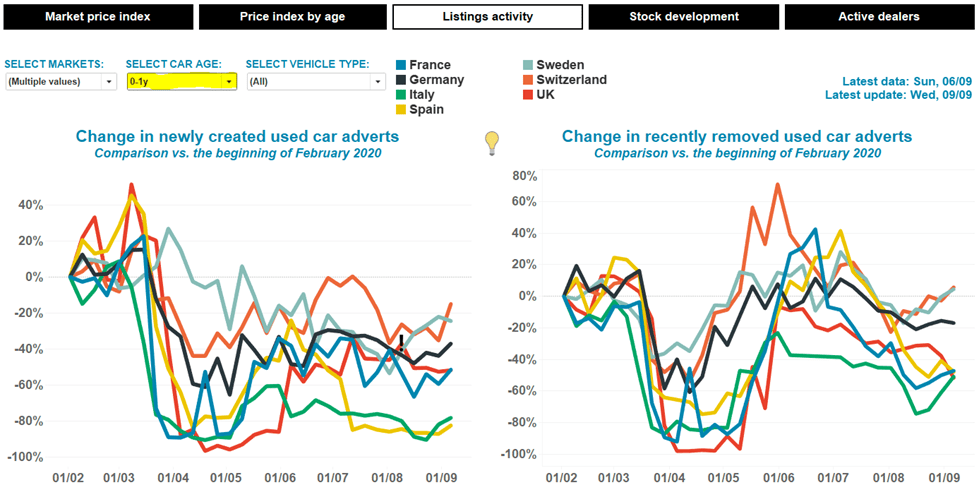
Left chart shows how active stock at dealers for cars up to one year old has been declining and rising but they are still at a below pre-Covid-19 level; right chart shows that sales of these very young used cars is on pre-Covid-19 levels on average. Source: Autovista Group Covid-19 tracker
Figure 4: Change in market activity across Europe (older used)
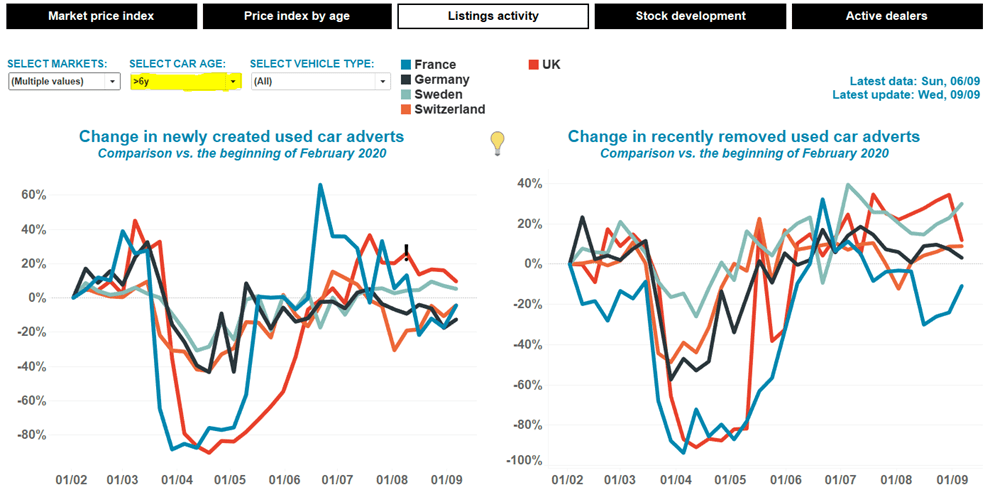
Left chart shows how active stock at dealers for cars older six years is increasing to pre-Covid-19 levels or slightly above; right chart shows that sales of these older used cars exceeds pre-Covid-19 levels. Source: Autovista Group Covid-19 tracker
The double-edged sword of EV government incentives?
Autovista Group’s chief economist Dr Christof Engelskirchen ponders the pros and cons of electric-vehicle (EV) purchase incentives.
High up-front discounts granted on the purchase of new cars and their negative impact on residual values (RVs) is a phenomenon well described and frequently observed in the automotive industry. We covered it in our recent piece on the impact of sales planning on residual values. Lower residual values do not only represent a direct economic loss for those with vehicles on their balance sheets; low residual values also prevent profitable new car sales, as they make it almost impossible to offer competitive and sustainable leasing rates.
Many governments are determined to support the particularly battered automotive industry, which is confronting several expensive fights. It is battling with new technologies, new competitors, the shift to zero-emissions and depressed margins. The pandemic and the associated lockdowns have intensified the pressure. Recovery will take considerable time. Many jobs are at risk, and it is sensible for governments to soften the blow by supporting the transition financially.
There is one caveat: too often, the government-funded stimulus programmes focus solely on stimulating demand for new cars. Governments should avoid this and other common mistakes such as:
- Up-front, transparent and long-term incentives send the signal that new cars are overpriced without them. Lower transaction prices of new cars will lower transaction prices of used cars. A good example of this can be seen in France, where many years of a bonus/malus system have depressed the used car price of battery-electric vehicles (BEVs);
- Governments risk creating an oversupply of used cars. The German government has reduced company-car taxes for many plug-in hybrid electric vehicles (PHEVs) by 50% (and 75% for BEVs). That makes them highly attractive as company cars, in particular PHEVs due to their versatility. There is a substantial risk that the rise in the supply of used PHEVs will not meet the same demand on used car markets, as there is no similar relative benefit for a used car buyer to choose PHEV over petrol;
- Even though government programmes mostly stimulate alternative powertrain types, the massive support – easily 10%-20% of the list price – delivers negative spillovers on all used car prices, even those of internal combustion engine (ICE) vehicles. The higher the stimulus is, the higher the spillover effects become;
- Reducing VAT for used cars is a mistake, as it directly lowers the signalled retail used car price. Germany has implemented such a measure for the period of July to December 2020: VAT rates are reduced from 19% to 16% for used cars. This will effectively drive down signalled retail used car prices on internet portals by 2.52%. Stimulating used car purchases can be RV-supportive, if done correctly: ex-post refund of part of the VAT or simply a purchase incentive for used cars – as seen in France and the Netherlands, and to a lesser extent in Spain – works better; and
- Incentives are like a drug, and an exhausted incentive scheme creates a bigger demand gap. Many push the purchase of their vehicle forward because of a scheme, as currently observed in France where used car prices are rising because their purchase is incentivised by the government. The scheme ran out by the end of July.
European incentive schemes: more pressure
The existing government incentive schemes in Europe and the UK are diverse and show how differently countries approach the topic. We compare them in Table 1. We see that 16 of the 18 countries we analysed have an incentive scheme for electric vehicles (BEV & PHEV) in place. We have evaluated the relative strength of the stimulating effects for each dimension of the schemes.
Most governments that have installed incentives schemes offer purchase incentives as part of the scheme. Schemes in France, Germany, Italy, Austria, the Netherlands, Romania and Sweden are particularly generous. Company car tax benefits exist in nine out of the 14 schemes, and they can act as impactful stimuli. Acquisition-tax and ownership-tax benefits are frequent as well, but usually have less of a stimulating effect. The exception is in Finland, where lower acquisition taxes bring the prices of BEVs down to ICE-vehicle levels.
Our evaluation of the schemes covers previously existing schemes on top of the newly added schemes.
Tables 2 to 17 describe the schemes and verdicts for the markets we cover in this update.
Table 1: Government incentive schemes, their potency and risk of building up RV pressure

Source: Autovista Group
Table 2: France – significant EV incentives; stimuli for used cars help ease RV pressure
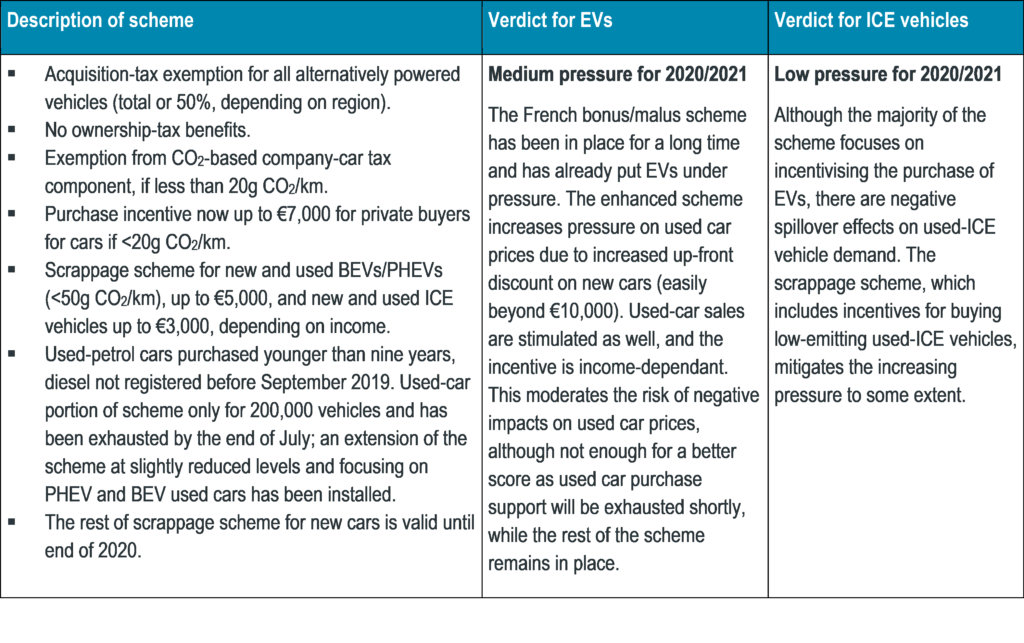
Table 3: Germany – risk of higher pressure on EV RVs than in other markets
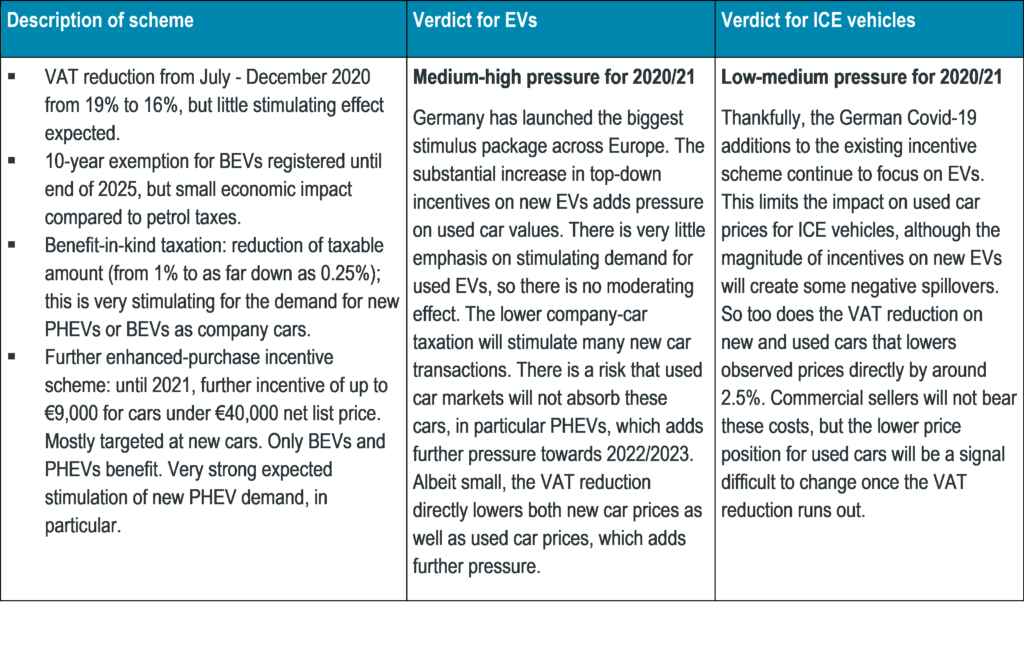
Table 4: Italy – among the largest purchase incentives for EVs

Table 5: Spain – sizeable ownership tax cut & large EV incentives; covers young used ICEs
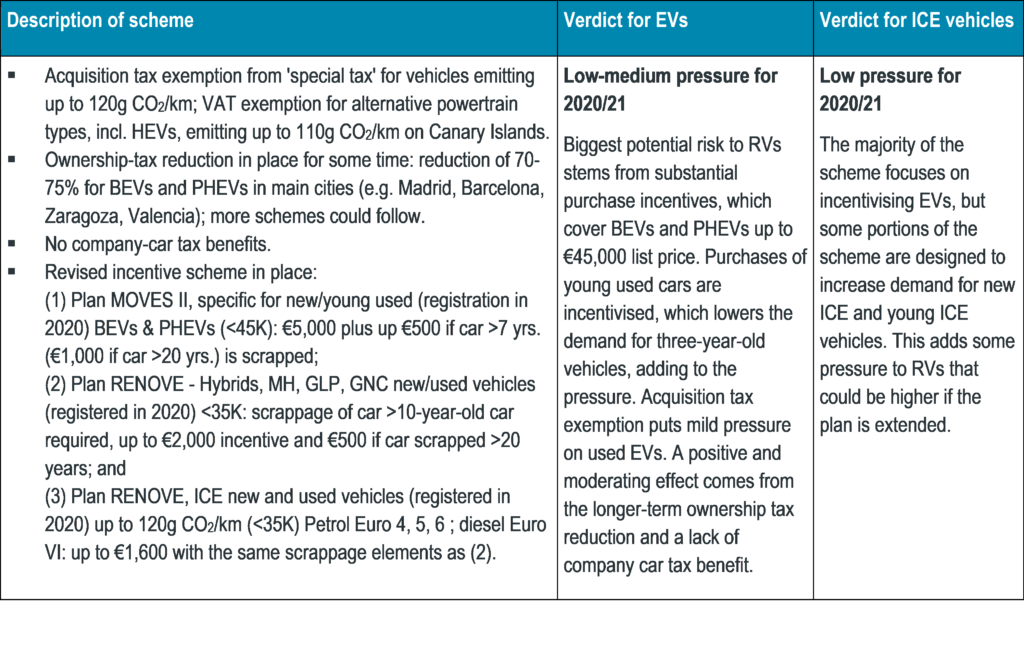
Table 6: UK – no Covid-19-induced scheme, currently solely on zero-emission vehicles
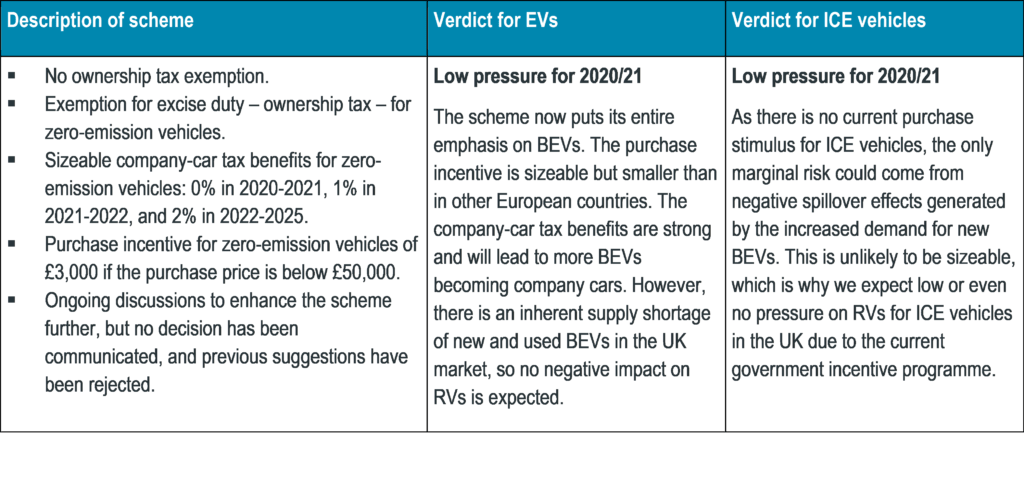
Table 7: Austria – generous government purchase incentives

Table 8: Belgium – plans to push ICE Euro0-Euro5 vehicles from city centres by 2025

Table 9: Finland – high-impact CO2-based acquisition tax benefits make BEV/PHEVs attractive

Table 10: Hungary – no purchase incentives and free parking for BEVs and PHEVs
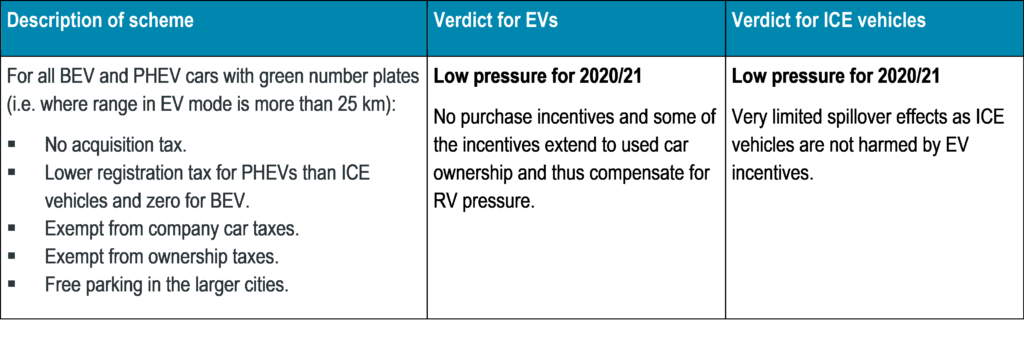
Table 11: Netherlands – strong incentives for the purchase of used BEVs
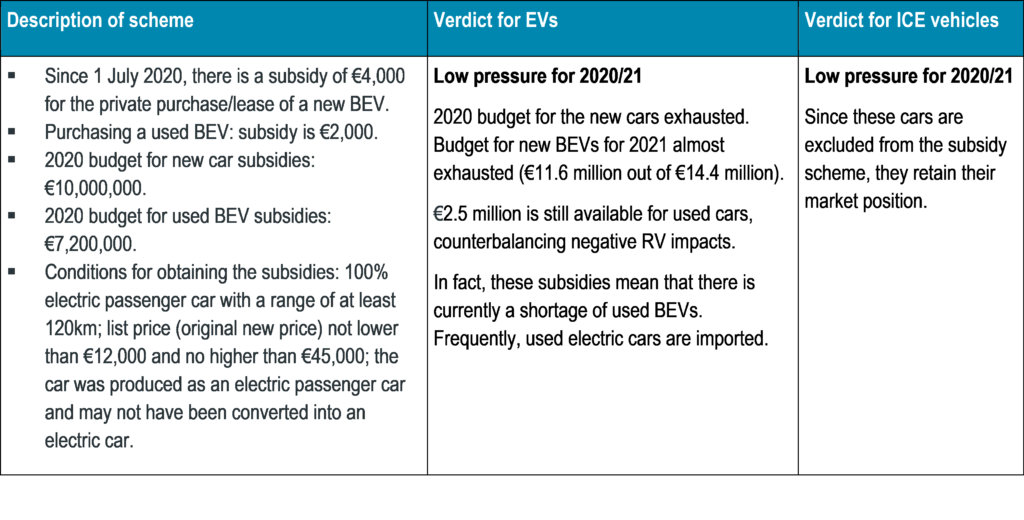
Table 12: Poland – all about acquisition tax benefits, and they are not putting pressure on RVs

Table 13: Portugal – balanced scheme also supporting ICE; limited budget and no extension
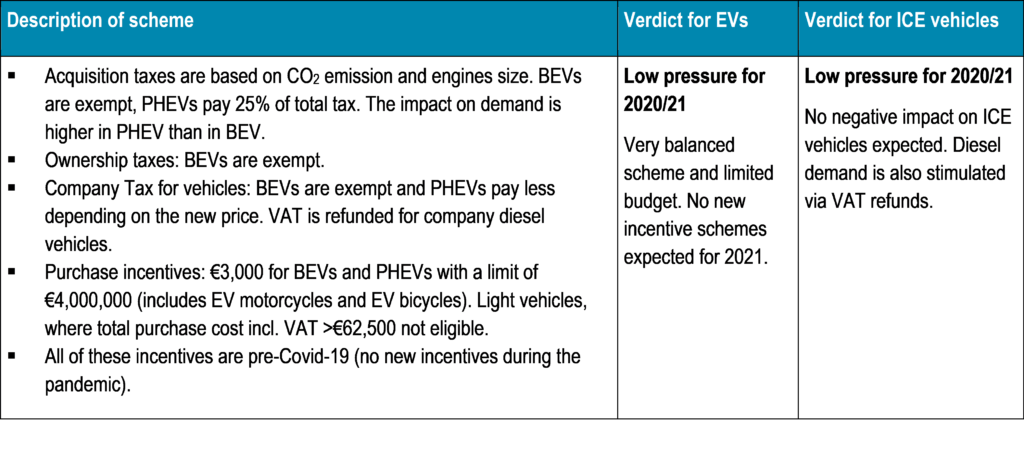
Table 14: Romania – generous scheme but almost exhausted
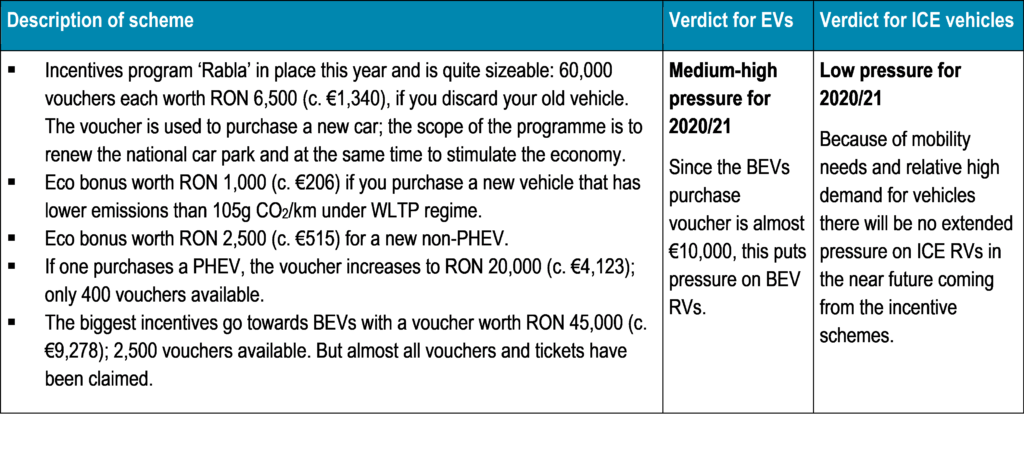
Table 15: Sweden – strong stimulating effect for new BEVs and PHEVs

Table 16: Slovenia – sizeable incentives, but limited to BEVs with a 3-year holding period

Table 17: Slovakia – reduced acquisition taxes for hybrids, PHEVs and BEVs only

Conclusion
Incentive schemes are necessary to compensate for an expected loss of private purchasing power as part of the economic crisis that will follow Covid-19 lockdowns. Most European countries have enhanced their schemes, and they offer very sizeable purchase incentives. Schemes are largely targeted towards new electric vehicles (i.e. BEVs and PHEVs), which is why the expected negative impact on RVs is higher for electric vehicles. The schemes may create an oversupply of electric vehicles towards 2022.
We are less concerned about pressure building up for used ICE vehicles across Europe, as they receive less attention in government schemes.
Smarter schemes make sure that demand is also stimulated on the used car market: France, the Netherlands and Spain are good examples for this. Here, governments have installed schemes that include purchase incentives for used vehicles.
Coronavirus scenarios – how swiftly will economies recover?
Thoughts had turned towards a swifter economic recovery over Q3 2020, but now the second wave of Covid-19 hits Europe hard. Is a fast recovery wishful thinking? Will pent-up demand be exhausted soon? Here, Autovista Group’s experts analyse the latest trends and scenarios for Europe’s used-car markets.
In our ambition to support analysis of the impact of the coronavirus on the automotive industry, we have developed a number of scenarios. The scenarios are based on risks associated with the following five mandatory parameters, as well as other country-specific factors that influence RV development:
- How long until the spread of infections is contained;
- The economic outlook for 2020, 2021 and 2022;
- On the supply side, expected issues in the supply chain for new car production;
- On the demand side, development of private consumption over the coming years; and
- An assessment of how effectively fiscal and monetary policy measures are working.
Views on economic recovery have improved
Before the lockdown, forecasts of GDP growth were around 2% for 2020 globally and slightly below 1% in the Eurozone, an outlook that had already been depressed compared to January and February baselines. Since then, the view of the crisis and its economic impact continuously darkened, hitting a low in July. Forecasts published in September 2020 painted a more positive picture, however, and the view for October was similarly positive (Figure 5).
The latest forecast published by the EU Commission on 5 November confirms an expected longer path to recovery in 2021 (Figure 5). We expect other institutions to adjust their view on economic recovery in a similar way.
Figure 5: Eurozone GDP growth projections
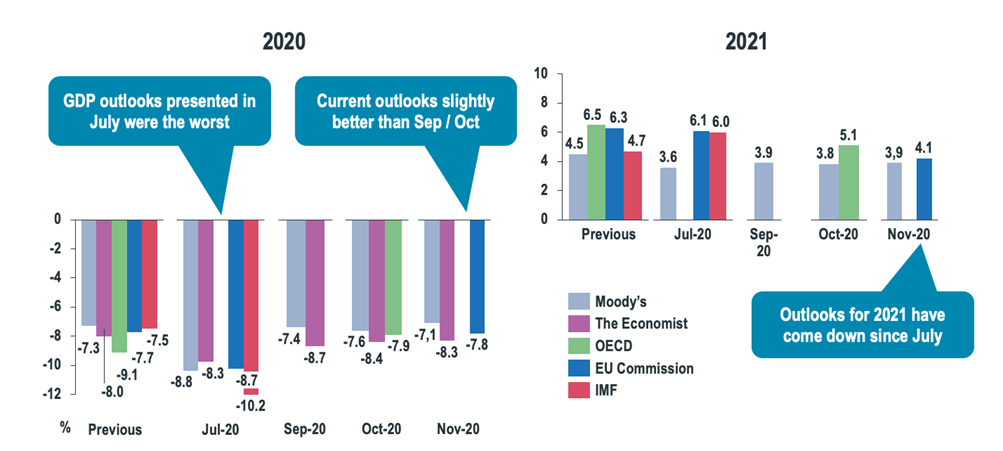
Source: Moody’s The Economist, OECD, EU Commission, IMF, Autovista Group analysis
The immense levels of pent-up demand and the fact that the contraction of the economy was so severe during Q1 and Q2 2020 drove much of the Q3 economic rebound. Many forecasters have stressed the expectation that the v-shaped recovery will lose steam towards the end of the year and that recovery to pre-crisis levels will take until 2022 in the Eurozone. The second wave of the Covid-19 is a reminder that the pandemic is not over.
Most likely scenario: ‘medium risk’
In our August and September updates of this whitepaper, 12 out of 18 markets allocated themselves to our ‘medium risk – slow u-shaped recovery’ scenario (SC3). We confirm this view for this November update. The same 12 countries expect that scenario to materialise with the highest probability. Ten countries adjusted their scenario probabilities for this update. The average probability for SC3 rose from 54% to 61% in those countries that chose it as the most likely scenario.
Figure 6 looks at the distribution of all probabilities assigned to each scenario by each of the 18 countries. The latest adjustments mirror the more subdued economic outlook: the average probabilities allocated to SC1 and SC2 have come down, and for SC3 have risen. Countries expect a setback in Q4 2020 and Q1 2021.
Robert Madas, valuations and insights manager for Austria and Switzerland, gives the view that many of our editors share: ‘Observation data from the last weeks has shown further stabilisation of asking prices. There is still stable demand in the used car market. However, we see high uncertainty regarding possible new lockdown measures due to the second Covid wave. Therefore, our RV outlook for the end of 2020 is somewhat better than before but we expect a shift of negative effects into 2021. With regards to recovery scenarios, we still expect a slow u-shaped recovery in both markets.’
Figure 6: Distribution of average probabilities by scenario; Sep vs. Nov update
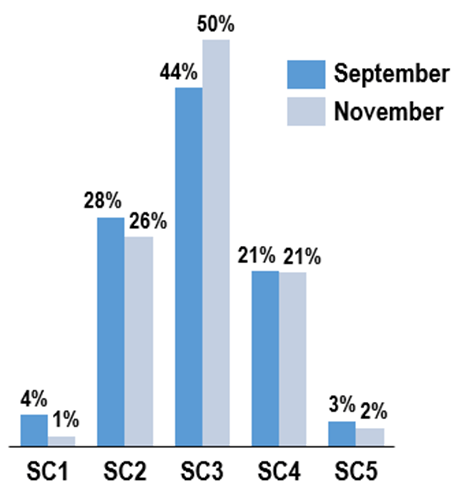
Source: Autovista Group
Table 18 shows scenario probabilities for the 18 countries covered in this initiative. Compared to the last update, scenario probabilities remain unchanged for Austria, France, Italy, Poland, Portugal, Slovenia and Switzerland. Apart from France, they all see SC3 as most likely. France remains in the more positive SC2, despite currently facing one of the strictest Covid-19 lockdown regimes in Europe.
France’s used car markets are performing above pre-crisis levels for the observed age bracket, behind only the UK and Poland. ‘That may be surprising but is a consequence of powerful incentive scheme that also supported the purchase of used cars,’ explains Yoann Taitz, head of valuations and insights for France and Benelux. ‘I doubt that this positive trend will persist until the end of this year,’ he states, however.
The most substantial downward adjustments in terms of scenario probabilities happened in Hungary, Czechia, Finland and Sweden, with probabilities of 60% and higher for SC3, as hopes for a v-shaped recovery have vanished. Belgium and Spain both upped the probabilities for SC3 by 5 percentage points.
Most notably, the Netherlands switched from SC1 as the most likely scenario to SC2, joining France, Germany and Poland. These four countries are looking more positively into the future, but see darker clouds forming.
Germany raised the probability for SC3 3 from 35% to 45% in this update, making it almost as likely as their most probable SC2. Andreas Geilenbrügge, head of valuations and insights Germany explains: ‘According to our current knowledge, the economic effects of the crisis will be more pronounced in 2021 than originally expected. The low point in used car markets will shift to 2021. Used-car market recovery will only start in 2022.’
With the further increased uncertainties around Brexit and the second lockdown in place, our UK team further increased the likelihood of SC4 to 75%. Anthony Machin, head of content and product at Glass’s UK, confirms that the UK team ‘has factored into their forecasts the changes to the furlough scheme introduced by the Chancellor, Rishi Sunak alongside a likely no-deal Brexit and the new national lockdown.’
Table 18: Risk scenarios for the impact of coronavirus

Impact on residual values
The impact on residual values depends on the most probable scenario and country-specific circumstances. Figure 7 shows used car price development by scenario cluster, as an unweighted average and indexed. Countries have been allocated to the scenario cluster according to their highest probability scenarios. RV developments over the next two years will be only mildly depressed for SC2-countries. Developments resemble a v-shape but stretched out over two years. Towards the end of 2022, pre-crisis RV levels should be reached.
This stands in contrast to the UK, where the market impact of the depression and a likely no-Brexit deal would be felt with a delay. The drop is substantial, and the UK is not expected to recover fully until towards the end of 2022.
The SC3 cluster sees a more accentuated drop continuing into 2021 and no full recovery by 2022. As this cluster represents 12 countries, we need to look into country-specific developments: in Figure 8, we sort the clusters into regional clusters. We have also compared the view given in our last update of the whitepaper, in September, and this update.
Eastern and northern European countries expect a faster recovery from the crisis than the southern European cluster. The DACH region (Austria, Germany, Switzerland) performs in the middle of the two.
Ana Azofra, valuation and insights manager, Autovista Spain warns that the positive momentum we have seen in many markets may end: ‘After several months of used-vehicle price recovery, prices are already beginning to reflect a changing trend. Dealer stock is increasing and approaching the levels of March 2020. Meanwhile, the market is facing a second wave and the economic crisis is reflected in the negative development of unemployment figures.’
RV performance is country-specific and affected by exchange rate development and different speeds of economic recovery. We show the country-specific outlooks in Table 19. These are the main takeaways:
Figure 7: Used car price development by scenario cluster; UK, Romania separated out (index)

Note: These clusters represent unweighted averages of countries and do not represent country-specific forecasts. Please refer to Table 19 for the country-specific forecasts.Source: Autovista Group
Figure 8: Used car price development by regional cluster (index); Sep vs. Nov update

Note: These clusters represent unweighted averages of countries and do not represent country-specific forecasts. Please refer to Table 19 for the country-specific forecasts. Source: Autovista Group
Table 19: Forecast percentage change in residual values EoY vs. March 2020
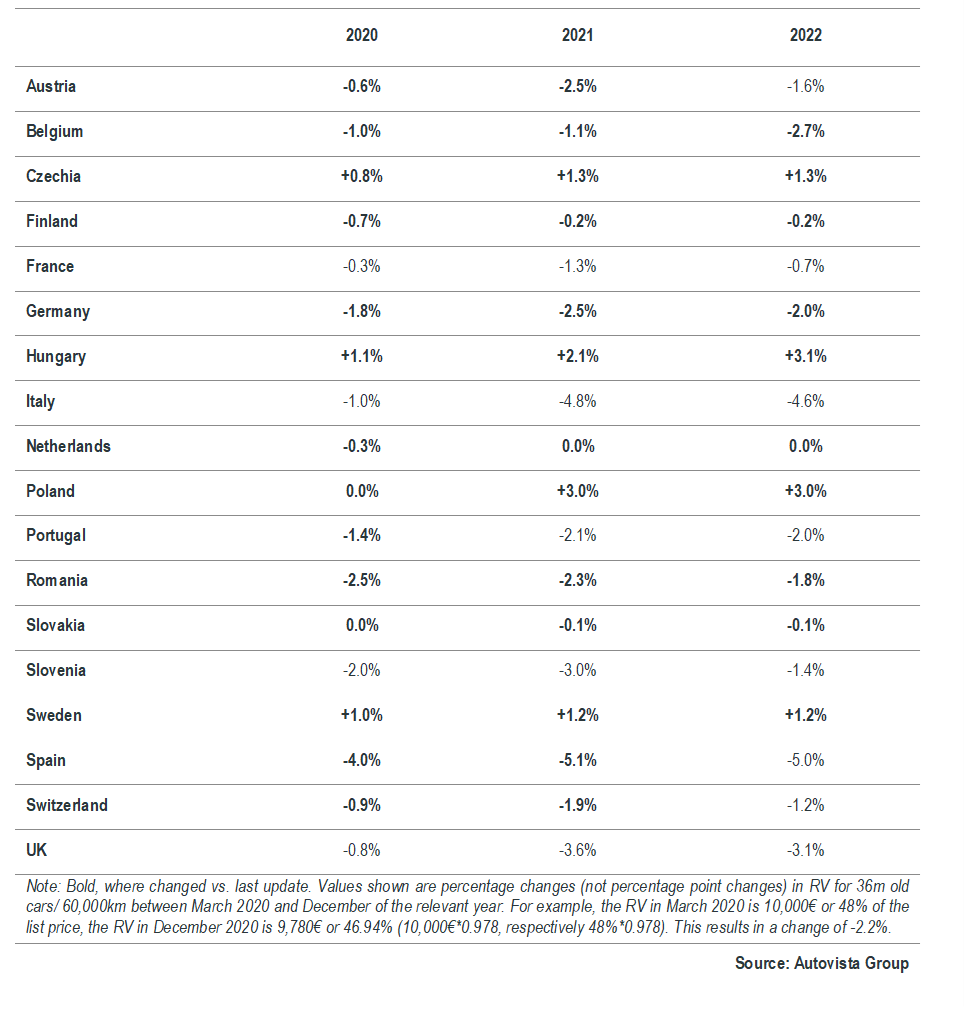
Conclusion
This is the sixth update to our analysis of the impact that the coronavirus will have on societies, the economy and used car markets.
Fourteen out of 18 countries expect less pressure in 2020 than initially expected: the exceptions are France, Italy, Slovenia and the UK.
Into 2021 and 2022, the impact of the economic crisis on RVs will materialise in different ways, depending on the circumstances in individual countries. Our editorial teams expect a sharper drop in RVs in the Southern European countries: in Spain and Italy, around -5% at the peak of the crisis. Austria, France, Germany, the Netherlands, Switzerland and the Nordics will not be hit as hard as the southern regions, based on the current risk assessment. We anticipate a very elastic recovery in Eastern Europe, in particular in Czechia, Hungary, Poland and Slovakia, in part due to their currencies weakening towards the Euro. RV outlooks have also improved for Romania.
The gap is widening in terms of RV outlooks. More countries (now five) expect a full recovery towards the end of 2021: Hungary, Poland, Czechia, Sweden, and the Netherlands. Yet, 13 out of 18 countries continue expect depressed used car markets in 2022 vs. pre-crisis levels.
During the 2008/2009 financial crisis, we saw drops in RVs that were substantially higher than currently forecast in our scenarios. At the time, declines of 12% (Germany) or 15% (Spain) on average across segments had built up over 12-18 months into the crisis. We confirm that we do not expect this level of impact on used car markets, as indicated in our risk scenario probabilities and RV forecasts.
Several things are different in this crisis. Governments have taken much stronger policy actions against the collapsing demand. The current economic shock is not paired with a lack of financing opportunity. In addition, after the peak of the crisis, we are seeing substantial pent-up demand as private consumers perceive the shock as temporary, and several incentive schemes support the purchase of new and used vehicles.
On the downside, a second wave of infections has hit Europe harder than many expected. More restrictions have been implemented throughout November and more are immanent. Many countries and regions have entered another (softer) lockdown. This may serve another hit to battered economies and supply chains. We expect that the currently felt strong rebound of economies will lose some of its steam towards not only towards the end of this year but into Q1 2021.
Author
- Dr Christof Engelskirchen, Chief Economist, Autovista Group
Analysts & Contributors
- Hans-Peter Annen, Chief Editor, Autovista Switzerland
- João Areal, Editorial Manager, Autovista Eurotax Portugal
- Ana Azofra, Valuation and Insights Manager, Autovista Spain
- Dejan Butinar, Country Manager, Eurotax Slovenia
- Andreas Geilenbrügge, Head of Valuations and Insights, Schwacke (Germany)
- Markus Halonen, Director of Statistics and Data Analyses, Autovista Group
- Ulmis Horchidan, Chief Editor, Eurotax Romania
- Zsolt Horvath, Operations Manager, Eurotax Hungary
- Marcin Kardas, Head of Editorial Team, Autovista Polska Neil King, Senior Data Journalist
- Dr Anne Lange, Head of Data Science, Autovista Group
- Anthony Machin, Head of Content and Product, Glass’s (UK)
- Robert Madas, Valuations and Insights Manager Austria & Switzerland, Eurotax
- Marco Pasquetti, Forecast and Data Specialist, Autovista Italy
- Yoann Taitz, Head of Valuations and Insights France & Benelux
- Johan Trus, Head of Data and Valuations Nordics, Autovista
- Roland Strilka, Director of Valuations, Autovista Group
- Nico VanHalst, RV Manager, Eurotax Nederland
- Idesbald Vannieuwenhuyze, Chief Editor and Valuations Manager, Autovista Benelux



